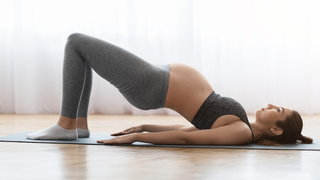So, if you were pregnant before, the cord may have attached to some other place in the placenta. But why is it important? The cord placement may vary, with some requiring more attention than others.
Why Does Umbilical Cord Placement Matter?
The umbilical cord is considered your baby’s lifeline in the womb that supplies oxygen and nutrients to them and removes waste matter. The cord attaches to the centre of the placenta normally to maintain blood flow.However, it may attach off-centre, like the edge or in unusual patterns, in some cases. You do not have to worry because most of these variations do not cause any problem, but some may require attention.
In this article:
What Are the Types of Umbilical Cord Placements?
Your doctor may want to check the cord placement during scans to rule out any problems. The common types of placement are listed below.- Central insertion: Cord attaches in the middle of the placenta, which is the most common and safest spot.
- Marginal insertion: Cord attaches at the edge of the placenta, also called a battledore insertion.
- Velamentous insertion: Cord attaches to the membranes before reaching the placenta. This condition is less common but may need more care.
Why Can Cord Placement Vary Between Pregnancies?
The following are the reasons for the different placement of the cord in each pregnancy.- If the placenta forms at the top (fundus), bottom, or side of the uterus, the cord may attach differently.
- Early blood vessel development can influence the best spot for the cord to attach.
- Uterine shape, scars from previous pregnancies, or fibroids, can change the way a placenta develops.
- It may simply happen by chance without any medical reason in some cases.
Is Different Cord Placement Dangerous?
The cord placement is harmless in most cases. Studies show that central insertion happens in almost 70% of pregnancies, while marginal insertion occurs in 7–9%, and velamentous insertion in 1–2%.- Marginal insertion: It is mostly safe, but has a slightly higher risk of a smaller baby.
- Velamentous insertion: It needs careful monitoring as blood vessels may be more vulnerable.
What Signs Should You Watch For?
You cannot feel how the cord attaches to the placenta, but watch out for the signs before the situation gets worse.- Baby's movements are suddenly reducing or becoming irregular.
- Unusual vaginal bleeding during pregnancy.
- Slower-than-expected baby growth is shown in scans.
How Will Doctors Monitor You?
Doctors track cord placement using ultrasound scans, so if your cord is marginal or velamentous, you may need to take the following precautionary steps.- More frequent growth scans to make sure the baby is developing well.
- Doppler ultrasound to check blood flow.
- Delivery planning in case early intervention is required to bring the baby safely.
What Can You Do to Support a Healthy Pregnancy?
You can take steps to lead a healthy pregnancy without worrying about the cord placement.- Eat a diet rich in proteins, iron, and fresh fruits and vegetables.
- Stay hydrated to maintain blood flow.
- Attend all your prenatal checkups.
- Stop smoking, drinking alcohol, and taking unnecessary stress.
- Track your baby’s kicks daily, as you may notice a regular pattern by 28 weeks.
Emotional Aspects You Shouldn’t Ignore
The cord placement is not much of an issue when it is centrally placed, but marginal or velamentous cords may sound worrying. Remember that you can still deliver a healthy baby without any complications. You can ease your anxiety by involving your partner or a friend in the discussions. You can also clear any concerns with your doctor by asking questions to build confidence.Checklist: What to Do Next
- Ask your doctor about your cord placement during the scan and whether your pregnancy needs extra monitoring.
- Keep a journal to track your baby’s movements.
- Follow your doctor’s advice on nutrition and lifestyle.
- Remember that variation in cord placement is common, so stay positive.
Whether you’re pregnant, a new mom, or navigating postpartum, you don’t have to do it alone. Join our support group to connect, share, and support one another.
FAQs on Why Umbilical Cord Placement in the Placenta Can Vary Between Pregnancies?
- Can I prevent where the cord attaches in my placenta?
The cord attaches to the placenta on its own in early pregnancy, so there is nothing you can do to control it. However, you can manage the effects through regular check-ups. - Will a different cord placement affect my delivery?
Most women deliver normally despite the cord placement, but your doctor may suggest a C-section for a safe delivery if you have velamentous insertion. - Should I worry if my ultrasound shows marginal insertion?
Marginal insertion is quite common and does not cause harm. Your doctor will monitor your baby’s growth more closely in such a case.









